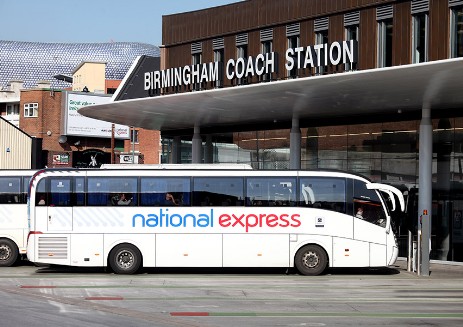
Travelling with your Dog
No matter whether you are going for a stroll for a couple of hours, a full day walk or a two week family holiday, keeping your dog safe and happy whilst travelling is very important.
Here's our guide to travelling by car, by train, by bus, by tram and by ferry...
Travelling by car
Travelling in a car is by far the most popular to get to a walk - it's flexible, convenient and in lots of cases is sitting on the drive waiting for you to get in.
But the ubiquitous nature of car travel masks the fact that most people who drive to a walk with their dogs are probably breaking the law, and also are risking serious injury - possibly death - to them and their dogs.
So what's this all about? It regards Rule 57 from the Highway Code.
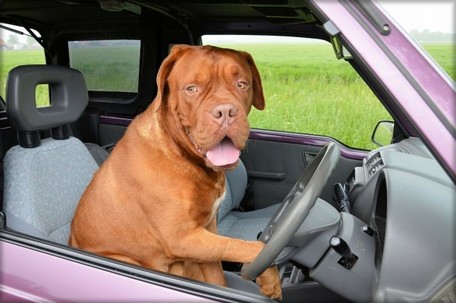
Rule 57 states:
“When in a vehicle make sure dogs or other animals are suitably restrained so they cannot distract you while you are driving or injure you, or themselves, if you stop quickly. A seat belt harness, pet carrier, dog cage or dog guard are ways of restraining animals in cars.”
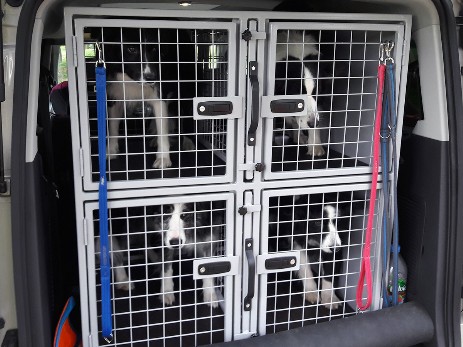
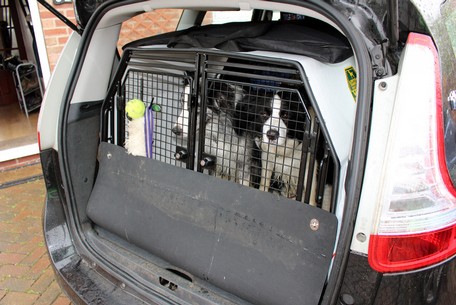

Tips and advice for car travel with your Dog
- They must be safe - legally
There's a legal obligation for dogs to travel safely, so we advise not to travel in the front of the car.Dogs should ideally travel in the boot and guard attached to block access to the car's passenger interior or within a crate/cage securely positioned within the boot.Or, if they are travelling on a back seat, they should be secured using a harness which is an appropriate size and corrected fitted to both the dog and the seat belt using the attachment.
- Get them used to car travel
If your dog is getting used to car travel, or more longer distance car journeys, put something familiar from home in the car with them to help them feel secure - such as a blanket, bed or a pillow. The smell of this can help give comfort and reassurance.
- Keep them hydrated throughout the journey
It's always important to have water available for your dog - and travelling in the car is no different.If you are intending on taking them in the car often, then one of the non-slip, non-spill water bowls designed not to be able to be tipped over will be a good buy.
- Chose the safest place in the car for a harness
It's better to secure a dog using a harness behind the front passenger seat and not behind the driver in case they get hold of clothing and cause the driver to lose control of the vehicle.If you've got more than one dog, it would be better to consider putting them in the boot, and use a dog guard or a suitably-sized dog cage.
- Build up to longer drives
If you want to go on walks with your dog further away than you have before, it might be worth building up gradually to get them used to the longer distance in the car. Even so, regular stops to let your dog out to go to the toilet and to stretch their legs is a good idea.The website Motorway Services has info on all the motorway service stations in Britain, and details about their facilities.
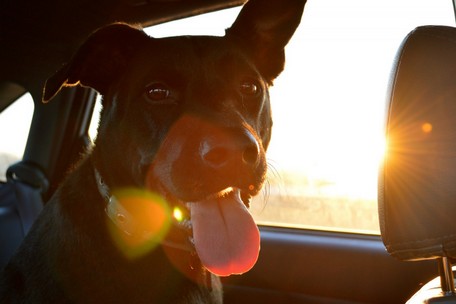
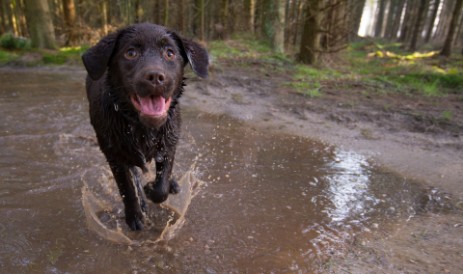
- Train your dog to wait before jumping from the car
When your dog gets to the end of a car journey, they know usually there's a fantastic walk to be had - so they are understandably excited and want to bound of the car as quick as possible. But that could be dangerous, for example, if you had to stop on a busy road when if you broken down.So try to encourage them to wait in the car until you give them the release command. There are many websites which will explain how to do this.


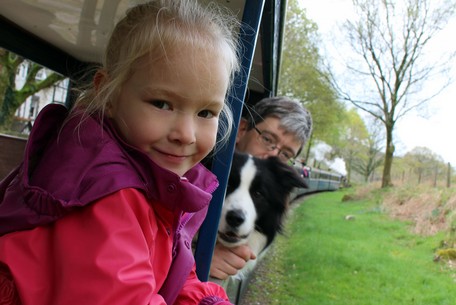
Dogs on Trains
Dogs are allowed on National Rail services in Britain. The National Conditions of Carriage states you may take two dogs per passenger free of charge - subject to the conditions below.
- Dogs must be kept on a lead at all time, unless contained in a basket
- Dogs must not endanger or inconvenience passengers or staff
- Dogs and/or their baskets must not occupy seats - or a charge will be made
- Dogs who are not guide or assistance dogs are not allowed in restaurant cars
- Dogs who are not guide or assistance dogs are allowed to travel in Sleepers, but bookings must be made at least 48 hours in advance and may be subject to a charge for a heavy duty clean
- A train company may refuse to take any animal under Bylaw 16. You may also be asked to remove your dog if it is causing a nuisance or inconvenience to other passengers
Heritage Railways - like the Ravenglass and Eskdale Railway pictured above - general do allow dogs on their trains, but usually in standard class and not in first class coaches. In most cases, heritage railways will charge for dogs.
One railway which doesn't charge is the Keighley and Worth Valley Railway, so you could do our Haworth to Oakworth walk with your dog, and come back on the train.
Check the website of particular railway you are intending on visiting to find out more information.
Tips and advice for train travel with your Dog
- Avoid the rush hour
Even without a dog, avoiding the time when more people are travelling by train seems to be a good idea... but when you are with your dog, it's a much better idea to be avoiding the morning commute.Travelling after 10am will help your dog to be less stressed and anxious about the journey - and will cut down on the cost for you too. Click here for our top tips to get cheap train tickets.
- Find a quiet seat
Sitting in a part of the train which is less busy could help your dog settle during the journey - and this is a lot easier if you are travelling outside the busy times. If you are booking online in advance, most long-distance train companies now allow you to select your seat on the web - so you can see where is more likely to be less busy.
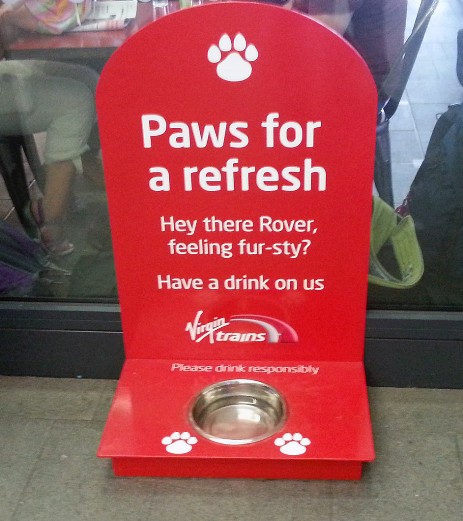
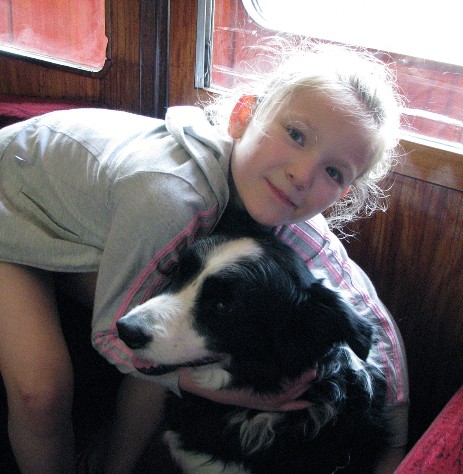
- Pack a doggy bag
A bag with some water, a bowl, some food and any medication your dog needs is a good idea to have. That should also contain bags suitable for cleaning up dog poo too.
- Toilet stop before getting on board
Whilst we've mentioned poos, encourage you dog to go to the toilet before you get to the station, maybe by taking them out for a quick walk before hand.
- Prepare for travel sickness
No all dogs enjoy travelling, so if yours suffers from travel sickness, try not to feed them a main meal for the trip. Bringing a lightweight mat or rug with you on train may help them settle if it has the scent of home.
- Be careful leaving the train
When you have to get off the train, your dog may be unhappy about the gap between the train and platform edge. This gap may be greater at stations on a curve - like York, for example. Be prepared to lift your dog onto the platform carefully, whilst being aware trains don't stay in stations for long.
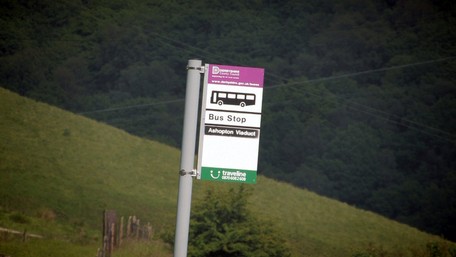
Dogs on Buses
In general, dogs are allowed on most bus services in Britain. As buses are operated by many different companies throughout Britain, it is always wise to check on the website of the particular company you intend to travel with.
All the walks on the Walks Around Britain have clickable links when possible to the most frequent service for each walk, so looking through their website should provide the answer.
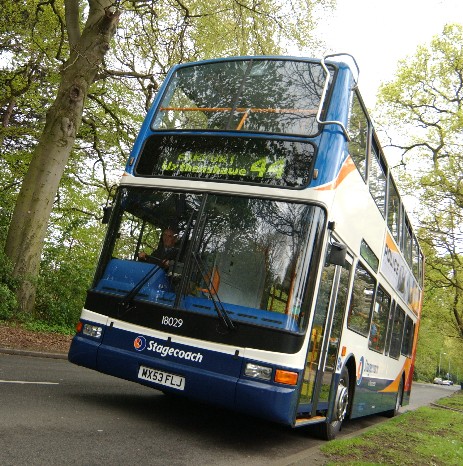
Of the three big bus groups in Britain...
- Stagecoach says dogs are permitted on its buses, at the discretion of the driver. Dogs must be on leads and must not be allowed on seats. Stagecoach do charge for dogs, and the cost varies with each Stagecoach bus company. We contacted our local Stagecoach Yorkshire and a dog ticket is 50p. Click here for more information.
- Arriva says dogs are permitted on its buses, at the discretion of the driver. Dogs must be on leads and must not be allowed on seats. Arriva do not charge for dogs. Click here for more information.
- First says are permitted on its buses, at the discretion of the driver. Dogs must be on leads and must not be allowed on seats. First do charge for dogs, and the cost varies with each First bus company - however, we contacted First West Yorkshire and First Potteries, and both do not charge for dogs.
Dogs on Trams /Light Rail / Tube
Where dogs and public transport gets complicated is with Trams, Light Rail and the Tube. Unlike trains or buses, there isn't a nationally recognised framework for Light Rail, and so it is down to each individual operator to decide their policy on whether to carry dogs.
In our research, we've found the following...
- Operators who DO carry dogs:
London Underground, Tyne & Wear Metro, Edinburgh Trams, Croydon Tramlink, Blackpool Trams
On London Underground and the Tyne & Wear Metro, dogs who aren't trained to use escalators must be carried, or you must use a lift - where available.
- Operators who DON'T carry dogs:
Nottingham Express Transit, Stagecoach Supertram, Manchester Metrolink, Midlands Metro
However, Nottingham Express Transit & Stagecoach Supertram will allow dogs if they are carried in a suitable container... which is not helpful if you are trying to go to and from a walk!
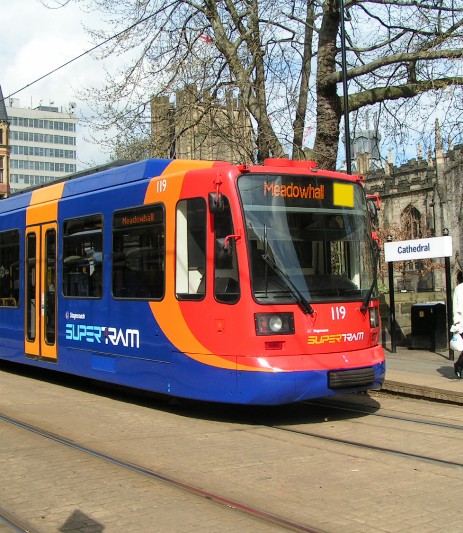

Dog on Ferries
If you want to take your dog out to the islands all around the British Isles, then amazingly this is easier than wanting to go from Meadowhall to Malin Bridge on the Stagecoach Supertram!
- Caledonian MacBrayne allow dogs to travel for free and they are allowed access to all outside passenger areas. Click here for more information.
- Isle of Man Steam Packet carry dogs, and they are free if they remain in your vehicle during the journey. Remember though, you can't get to the vehicle deck to check on this whilst you are at sea. The conventional ferry Ben-my-Chree does have a pet lounge and two pet cabins - these need to be booked in advance and cost £10 per pet. Click here for more information.
- Isles of Scilly Travel allow two dogs per adult to travel on the Scillonian III ferry from Penzance. The dogs must be on leads and kept with you at all times. The cost is £10 each way per dog. Or you can fly to the Isles of Scilly from the Land’s End and Newquay airports on Skybus. Dogs must travel in safety and comfort in our RSPCA-approved crate, which is suitable one large dog or two smaller dogs. The cost is £40 each way per crate. Click here for more information.
- Red Funnel to the Isle of Wight welcome accompanied dogs on ALL their ferries, FREE of charge - and there is no need to pre-book or obtain a ticket. They also provide a designated pet lounge, complete with bowls of water and complimentary dog biscuits, in the North Lounge on board Red Osprey, Red Falcon and Red Eagle. Click here for more information
Dogs on Coaches
Coaches may be more cost effective for long distance travel around the British Isles, but they aren't an option when dogs are concerned.
- Neither National Express, Megabus or Scottish CityLink allow any dogs to travel on their services, apart from trained assistance dogs
